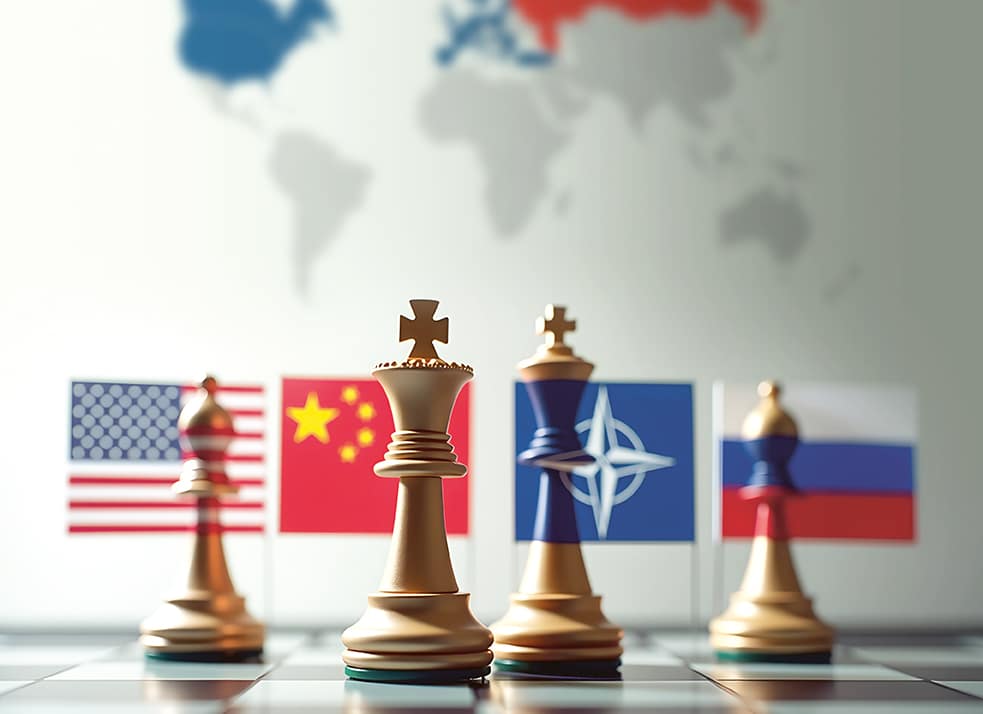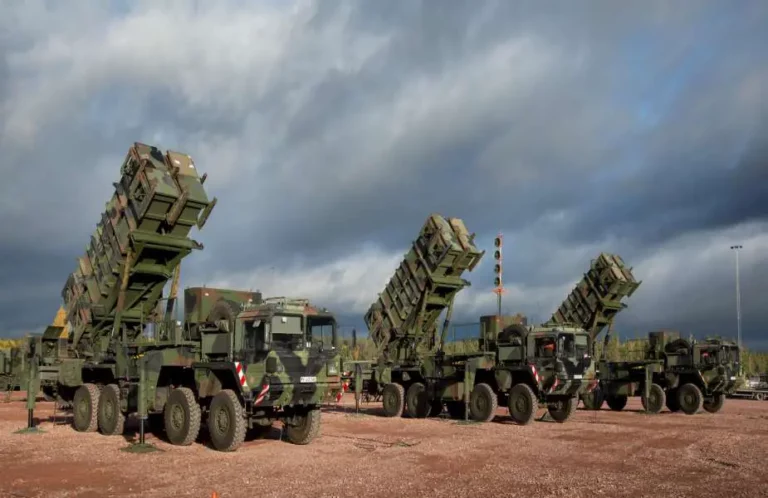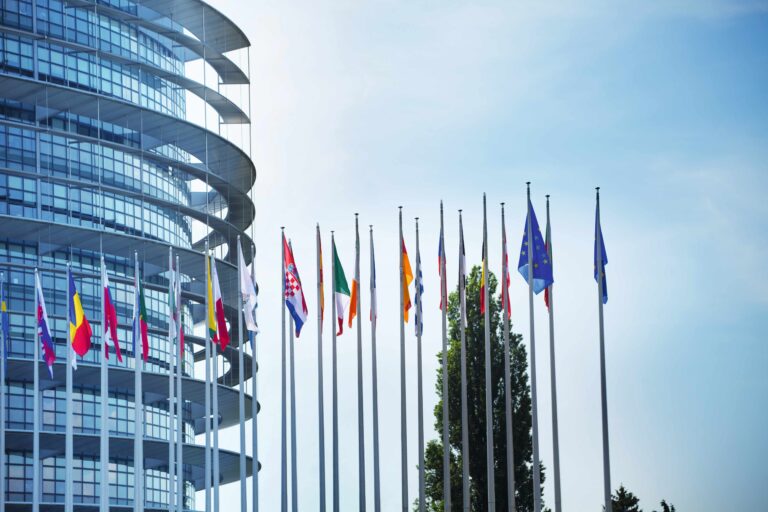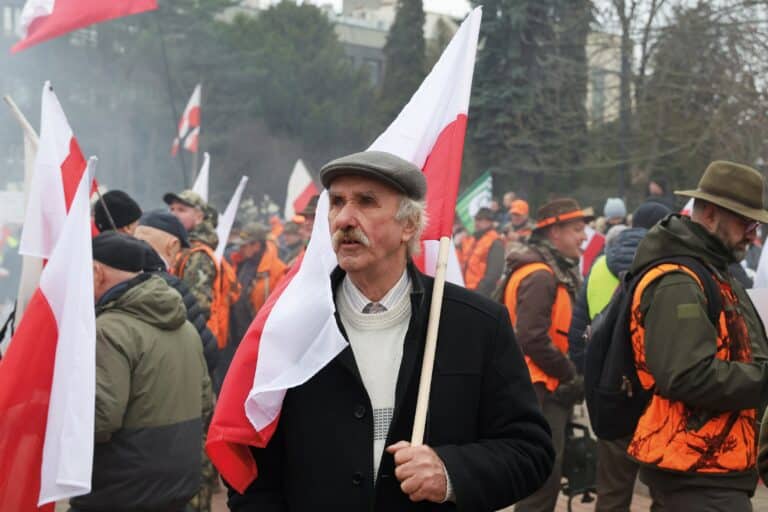NATO must strengthen quickly
Let’s hope we never have to put this to the test. This seemingly rhetorical question is now being asked by Poles and other Europeans. Suddenly, we have realized that the balance of power is shifting radically from a historical perspective.
Until now, it was a firm belief that the US and the West dominated the world, and that nothing could threaten this power. This has been the prevailing view for decades. However, now it has become clear that changes are underway. A peer adversary has emerged—one that, growing in strength, has begun to isolate the West, which is now limited to 50 countries and is trying, with varying success, to dominate the remaining 150 nations of the Global South. We are still, for now, in a relatively peaceful phase of evolution, although the first local conflicts are beginning to appear—such as in Ukraine, at the intersection of these two worlds.
The Western world, traditionally referred to as the “first world,” is organized around two centers of power: the US, which is trying to consolidate its “near abroad” (Canada, Greenland, and Central America), and Europe, which is being pushed by circumstances toward internal integration.
The adversary, the “second world,” until now dominated by three formally equal power centers—China, India, and Russia—is also undergoing internal transformation. The most powerful among them, China, treats its partners in BRICS and the Shanghai Cooperation Organization with traditional courtesy and tries not to show its superiority. India accepts joint initiatives that align with its interests—such as the plan for a new UN structure or removing US dominance from the global economy and replacing the dominance of the US dollar in global trade—but does not accept Chinese leadership. It is different with Russia, which has fallen into deep dependency on China—politically, economically, and militarily.
So far, China has limited its military assistance to dual-use products (such as trucks, construction equipment, or electronic components), but it allows its satellite state, North Korea, to supply Russia with unlimited amounts of weapons and ammunition. Russia has depleted its military stockpiles and has shifted most of its defense industry toward supplying its army. It has even sent a military contingent to the front in Ukraine. It is obvious that if war reignited on the Korean Peninsula, these losses would be quickly replenished by China.
Russia’s very attempt to seize the whole of Ukraine in February 2022 can be viewed as a way to improve its standing within the Chinese-Russian tandem. According to the conclusion of Prof. Zbigniew Brzeziński in The Grand Chessboard, Russia will not be able to return to global superpower status without Ukraine. Failure in Ukraine crushes the Kremlin’s dreams and means accepting Chinese hegemony.
Divisions are also beginning to appear within the Western bloc. While the US views China as an existential threat, Europe wants to play an independent role in relation to China and benefit from trade and economic cooperation for as long as possible.
The US is undergoing a revolution, making dramatic efforts to reduce its industrial dependency on China. Europe, for its part, is making declarative promises to achieve the same through the negotiation of new treaties.
The US, acknowledging China’s growing military superiority in key areas, wants to close this gap by strengthening its Far Eastern flank—relocating additional forces and resources there.
In addition to increasing the defense budget to an astronomical level of over $1 trillion, it is making adjustments and cuts within the Pentagon budget and among the branches of the armed forces.
The US is also being forced to reduce its military presence in various corners of the globe (over 860 military bases in more than 80 countries), especially in Europe. According to leaks, this will involve reducing the number of bases in Europe—starting with a 20 percent cut.
In the long term—as Europe strengthens its military capacity—this may involve more than half of the US contingent.
The idea is to achieve European defense independence while maintaining only the American nuclear umbrella in practice.
These announcements by American politicians (while European ones remain more restrained and discreet) are causing frustration and concern among European societies.
This is revealed by surveys of Polish public opinion. According to a recent poll conducted by SW Research for Rzeczpospolita, the majority of Poles (50.8 percent) do not believe that the US would come to Poland’s aid in the event of an attack.
The results show that only 25.7 percent of respondents trust that the US would fulfill its military commitments under Article 5 of the Washington Treaty, while 23.4 percent have no opinion on the matter. Similar skepticism applies to the belief in the success of the US plan to end the war in Ukraine. According to SW Research, only 24.1 percent of respondents believe that President Trump will succeed in ending the war in 2025, while 58.7 percent think he will not, and 17.1 percent have no opinion.
Poles are therefore deeply skeptical. The question remains: how can we ensure our security in these times of geopolitical transformation?
The Scale of the Threat
The current military potential of European NATO countries is roughly equal to Russia’s current potential. Russia is deploying around 40 percent of its armed forces in the war in Ukraine. The rest are securing its interests in other directions.
It is building new military capabilities in two newly established military districts focused on Finland and the Baltic states.
Russia’s army is projected to grow to over 1.5 million soldiers, and its industry is already producing additional equipment. The Russian economy has shifted to a wartime footing. From the early years of the war, it has experienced massive growth in arms production, which has become a driver of dynamic economic expansion.
The reserves accumulated during years of preparation for war have not yet been exhausted and are expected to last, at most, another two years of financing. By then, the Kremlin will have to decide either to conclude a temporary peace or to expand military operations.
A temporary peace would only be a pause, since Russia’s strategic goals—the reconstruction of its empire—would remain on the agenda.
However, continuing the war would require tight coordination with China, which has announced plans to absorb Taiwan through military means.
According to analysts at the RAND Corporation, China will be militarily ready to blockade Taiwan (and/or invade the island) by 2027.
From Russia’s point of view, such a situation would draw the Americans away from Europe and facilitate an invasion of the Baltic states and Poland.
From a policy-making perspective, the Kremlin unfortunately finds itself in a favorable position. Great power and chauvinistic politics enjoy broad public support. The Russian population has felt virtually no consequences of the war; it is disciplined and, with typically Russian resignation, would endure even drastic restrictions and a decline in living standards. Trade and economic cooperation have been successfully redirected toward China and other BRICS countries. Russia has reliable and powerful friends and allies. However, it is not capable of waging war against all of NATO on its own. Even ten years from now, it still won’t be.
The situation is different in the event of an attack on Europe alone, without US support. In that scenario, Russia could launch effective offensive operations. According to intentions recently revealed by SWR (civil intelligence) chief Naryshkin in Minsk, Russia may strike the Baltic states and Poland, seize the territories it needs, “dig in,” and wait for NATO to accept the territorial gains—much like the current acceptance of the annexation of parts of Ukrainian territory. To make it more palatable, Russia doesn’t have to govern these areas directly from the Kremlin; puppet, pro-Moscow governments would suffice.
That’s why the Kremlin is pressuring for things like new elections in Ukraine—something the US, unfortunately, has accepted.
The goal of the war is not just Ukraine, but the restoration of the empire in the shape left behind by Stalin. This is based on intelligence obtained before the invasion of Ukraine by the CIA, which was used publicly by President Biden and other senior members of the US government in an effort to prevent the Russian attack. This intelligence was extremely detailed and came from the highest levels of the Russian government and military leadership. But it had no effect.
The Kremlin had calculated the risks and determined that revealing its intentions wouldn’t harm its plans—everything was prepared, and the opportunity to absorb Ukraine easily might not come again.
Zbigniew Brzeziński had already warned in The Grand Chessboard that Russia would not become a superpower unless it regained Ukraine, with its natural resources, agriculture, and industry—but most importantly, its well-educated and populous society, which Russia regards as inherently Russian.
As it turned out, those calculations were wrong, and the war has been ongoing for three years. The war machine had already been set in motion, according to war plans involving the entire state system.
To use a metaphor—great powers are like transatlantic ships—a sudden change of course is impossible, and a direction once chosen can only be adjusted slowly, causing unforeseen problems. Russia’s war machine isn’t stopping; it’s actually gaining momentum. Its use only requires pointing out the enemy to society, so they’ll accept a new war.
The New Enemy
Once it became clear that Ukraine was effectively resisting and could not be defeated and absorbed militarily, a new narrative was sold to the Russian public: Russia was not just fighting Ukraine, but the entire “collective West.” Even absurd claims were added, such as that NATO troops—especially Polish soldiers—were fighting Russians on the front lines and had allegedly helped Ukraine capture part of the Kursk region.
Now they are going even further. On April 20, Minister of Foreign Affairs Sergey Lavrov said that it is “incomprehensible to the mind” how openly the European Union wants to revive the ideology of Nazism. He stated that the leadership in this process lies with the “Brussels bureaucracy.”
Russia, he insisted, will not accept this and will make every effort to ensure that this ideology “does not raise its head,” that it is destroyed once and for all, and that Europe returns to its values. He expressed hope that in European countries, the number of people who do not want to “abandon their roots and submit to bureaucracy—especially one with an openly Nazi flavor”—will prevail.
In Moscow’s propaganda, the Ukrainian government is described as Nazi, and the war against Ukraine is being waged to crush Nazism there.
At the end of January 2024, Putin also accused the Baltic states of “embracing Nazism.”
The Institute for the Study of War (ISW) believes this is most likely a continuation of the Kremlin’s efforts to prepare propaganda groundwork for a future aggression against NATO members—particularly the Baltic states—and other NATO countries under the pretext of defending persecuted Russians, as was the case before the invasion of Ukraine.
ISW notes that the Kremlin may also be preparing Russian society for a possible prolonged conflict with NATO in the future.
Russian analysts have correctly concluded that a third world war is not imminent and that the West’s reaction will be moderate and restrained.
Western societies will not allow themselves to be pulled out of their comfort and prosperity zones into a new war. Just as no one wanted to die for Kyiv, no one will want to die for Riga or Suwałki. This has been confirmed by the course of the war in Ukraine.
Western support was administered like a “drip feed”—just enough to keep Ukraine from losing, but not enough for it to defeat Russia. Even the NATO-Russia Founding Act of 1997 wasn’t revoked, despite Russia’s brutal violation of it.
US Ambassador to the UN Linda Thomas-Greenfield, during the emergency UN Security Council meeting in February 2022—held immediately after the invasion—disclosed imperial restoration plans stolen by US intelligence:
“Putin claims the right to the territories of the entire former Russian Empire, as well as the USSR. This includes all of Ukraine. It includes Finland (…), it includes parts of Poland and Turkey. Putin is challenging the entire international order. In essence, Putin wants the world to return to the time before the founding of the United Nations—to a time when empires ruled the world.”
Even before the invasion, in an ultimatum published by the Russian Ministry of Foreign Affairs on December 17, 2021—containing drafts of two agreements with the US and NATO on “security guarantees for Russia”—Russia demanded a return to the pre-1997 security gray zone in the area between “old” NATO and Russia. This would require the withdrawal of NATO troops and installations from the territories of the nine newly admitted member states and a halt to NATO’s expansion into post-Soviet countries, especially Ukraine.
Fulfilling these Russian demands would mean further limiting the sovereignty of Poland and other newly admitted countries beyond the provisions of the NATO-Russia Founding Act of 1997. The ultimatum was rejected by the US and the rest of NATO, and as a consequence, Russia invaded Ukraine.
After three years of war, Russia has not managed to defeat Ukraine, but it has succeeded in destroying the international order and overturning the “concert of powers.”
NATO’s New Strategic Concept
Putin is demanding much more from the United States—he is calling for the restoration of Stalin’s sphere of influence in Europe and, in effect, the re-creation of the geopolitical order from the Soviet Union era. This constitutes a declaration of war and represents the greatest challenge in NATO’s history.
The situation is even more serious because NATO has been weakened by decades of reductions resulting from the post-Cold War dividend. European NATO countries and Canada are now as weak as they have ever been. In addition, the US must reduce its commitment to the defense of Europe due to its competition with China.
A NATO response is therefore essential—one that involves the alliance’s entire structure and policy. The constitution of NATO is its Strategic Concept, which is revised from time to time depending on needs and the development of the security situation. All other planning and operational documents are derived from it.
A NATO summit is scheduled to take place in The Hague from June 24 to 26, and it must be historic. There is no time for half-measures. NATO must be strengthened at a rapid pace.
According to initial leaks, member states must at least double the size of their armed forces as quickly as possible—for example, the Bundeswehr should increase from its current 182,000 troops to nearly 400,000. This involves investments in military infrastructure, the creation of new units, the procurement of weapons, and, due to time constraints, almost certainly a recommendation to reinstate mandatory military service. France, after years of pushing for strategic autonomy, has decided to return to a joint nuclear defense policy. Discussions are underway on what Europe’s nuclear defense should look like as a complement to the US nuclear umbrella. There is talk of finally opening the path for NATO to withdraw from the NATO-Russia Founding Act of 1997, which would unblock Poland’s ability to acquire nuclear weapons under the NATO Nuclear Sharing program.
What is necessary is a program to win
a new Cold War with Russia by imposing a new arms race on it—just as NATO won the Cold War against the Soviet Union. All of this will be extremely expensive, and the costs are frightening to many countries.







